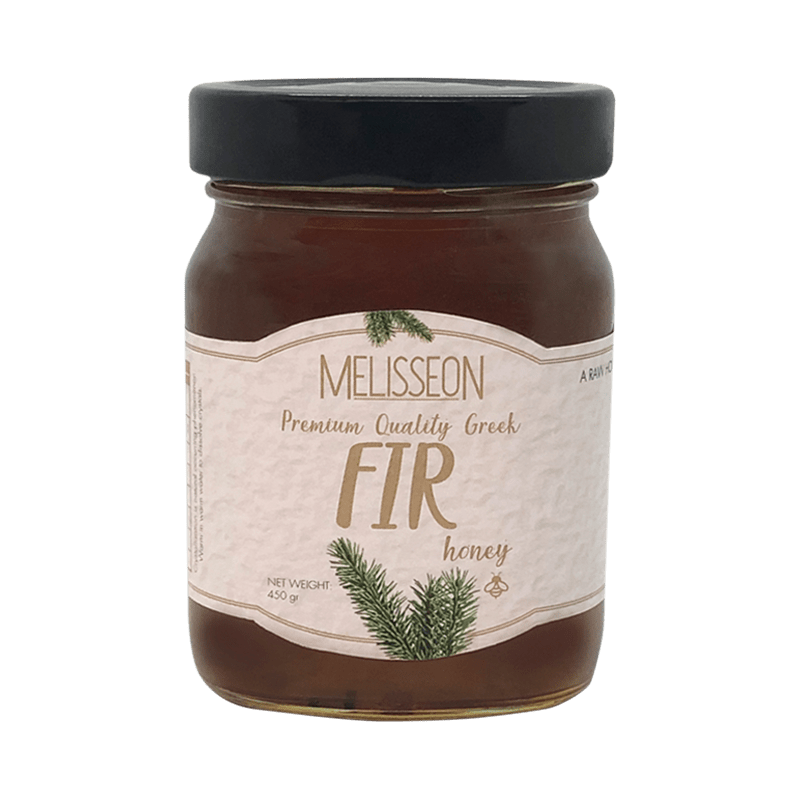Honey Varieties Fir honey

It is of high nutritional value with a characteristic taste, aroma and color. It has high nutritional value, special taste and aroma while its color is unique. Fir honey constitutes 5 – 10% of the honey production of our country.
Fir honey is characterized as honeydew honey since it is produced from the honeydew secretions of the fir. Essentially it is the sugary secretions of granules or aphids (meligra) that infest the needle-like leaves of the tree.
The production of honeydew takes place in the summer when the temperature rises enough, while a necessary factor is the existence of drought. In case of rainfall, honey production stops.
The color of spruce honey varies depending on the region of origin and is from dark or light red to black. It has a high density, which makes it very viscous. The low concentration of sugars contributes to its mild sweetness while its aroma travels to the fir-covered mountain peaks of the areas where it is produced.
One of its most important properties is that it never crystallizes, like pine, thanks to its low glucose concentration, below 30%. It is considered one of the best and most delicious honeys. The special conditions required for its production, as well as the remote areas in which the bees are placed, result in its price varying significantly from year to year.
